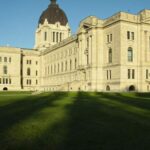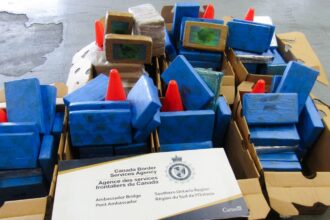The tragic death of a Quebec motorist killed by a falling tree has reignited urgent questions about property owner responsibility and liability in the province. As communities across Quebec grapple with aging tree canopies and increasingly severe weather events, legal experts are warning that property owners may face significant legal consequences if they fail to properly maintain trees on their land.
Last week’s fatal incident occurred during moderate winds when a large maple tree collapsed onto a passing vehicle on a rural road near Saint-Jérôme. The 42-year-old driver, whose identity has not been released pending family notification, was pronounced dead at the scene. Preliminary investigations suggest the tree showed visible signs of disease that had gone unaddressed for years.
“This case highlights a critical gray area in Quebec’s civil law,” explains Martine Beauchamp, a legal analyst specializing in property liability at Université de Montréal. “While property owners have clear responsibilities to maintain safe conditions, many remain unaware of their specific obligations regarding trees that could pose risks to public roadways or neighboring properties.”
Under Quebec’s Civil Code, property owners bear responsibility for damages caused by objects in their care, including trees. This principle of “garde juridique” establishes that owners must exercise reasonable vigilance in preventing foreseeable harm. According to provincial court records, compensation awarded in similar cases has ranged from $50,000 to over $1 million depending on circumstances and negligence severity.
Municipal authorities across Quebec have responded by launching awareness campaigns about tree maintenance. Longueuil and Laval have implemented new inspection programs targeting properties adjacent to high-traffic areas, while Montreal has expanded its arborist services to help residents identify hazardous trees.
“We’re seeing a concerning pattern where property owners, particularly in rural areas, simply don’t realize they should be periodically inspecting trees near roadways,” says François Thibault, director of public safety for the municipality of Saint-Jérôme. “With climate change intensifying storm patterns and weakening tree structures, what was once considered adequate maintenance may no longer be sufficient.”
Insurance companies are also taking note. Several major Quebec insurers have revised policy language to clarify coverage limitations for tree-related damages, while some have begun offering incentives for property owners who conduct regular professional assessments of mature trees.
The provincial transportation ministry reports that tree-related accidents have increased 18% over the past five years, with approximately 230 incidents reported annually across Quebec roadways. While most result only in property damage, the recent fatality underscores the potential human cost.
For homeowners concerned about potential liability, experts recommend annual inspections by certified arborists, particularly for trees bordering public spaces. Warning signs requiring attention include leaning trunks, visible decay, dead branches, and fungal growth at the base.
“The legal standard isn’t perfection,” notes Catherine Lemieux, a Quebec civil litigation attorney. “But property owners must demonstrate they’ve taken reasonable steps to identify and address obvious hazards. In the case of the Saint-Jérôme incident, preliminary evidence suggests the diseased condition would have been apparent even to an untrained observer.”
As Quebec’s urban and suburban forests continue to age, and extreme weather events become more common, the question remains: are property owners prepared to meet their legal and moral obligations to protect public safety, or will it take more tragedies before preventative tree maintenance becomes standard practice?

























